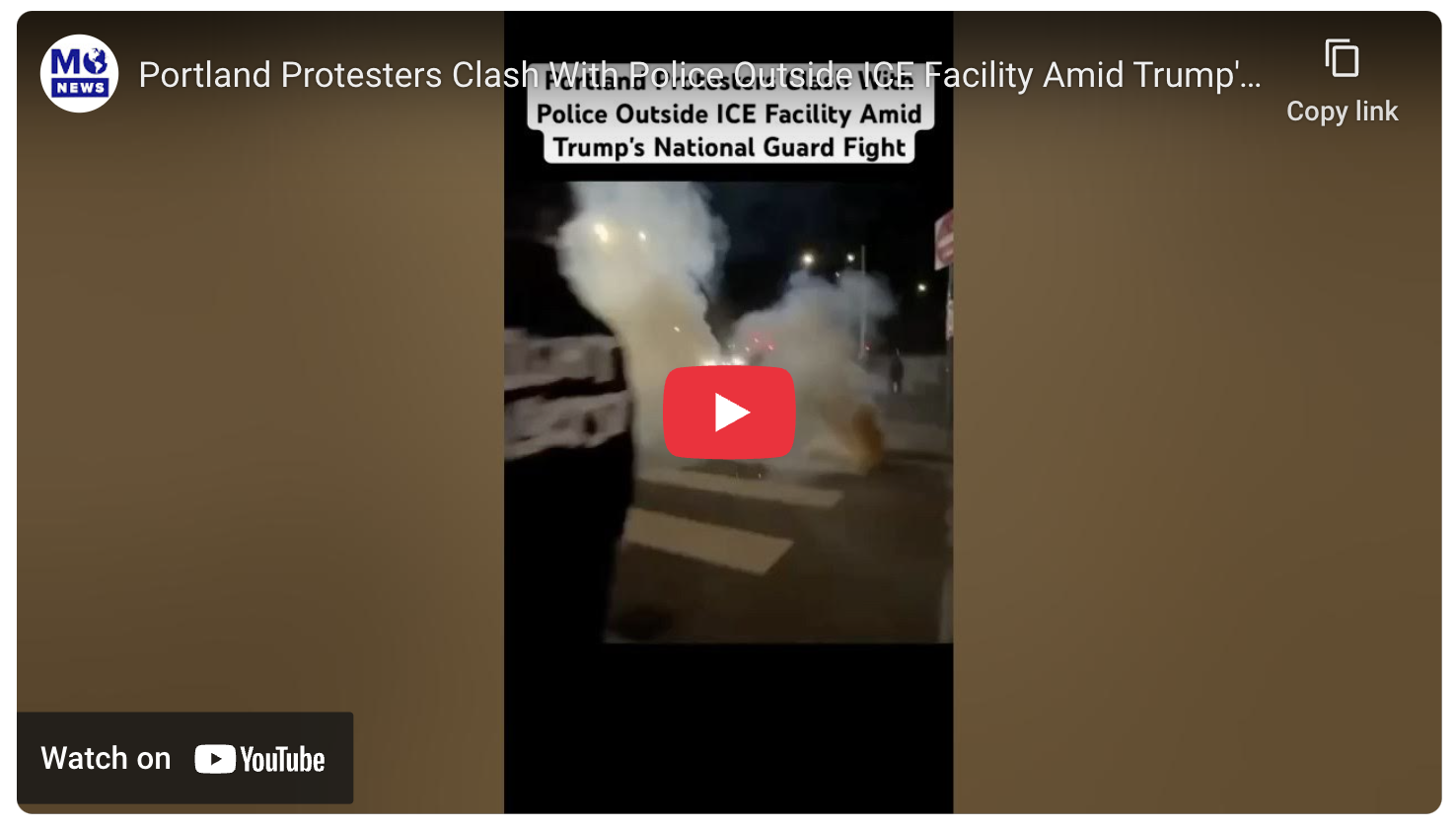Trump Escalates National Guard Deployments, Defying Judge And Blue-State Leaders
President Trump’s attempt to deploy the National Guard in Democratic-run cities escalated over the weekend as the White House ordered troops to Portland and Chicago — over objections from state leaders and in defiance of an Oregon judge’s orders.
U.S. District Judge Karin Immergut, a Trump appointee, on Sunday night blocked the administration from sending hundreds of California National Guard troops to Oregon. It was her second decision in as many days that temporarily blocked the administration from federalizing and deploying state National Guard troops.
Meanwhile, Illinois filed a lawsuit Monday to block Trump from deploying hundreds of Texas National Guard troops to Chicago.
White House Press Secretary Karoline Leavitt on Monday dismissed concerns about Trump’s National Guard plans: “Why should they be concerned about the federal government offering help to make their cities a safer place?” She also pushed back on a federal judge’s ruling blocking troop deployments, saying the opinion was “untethered” from reality or law, citing U.S. Code 12406, which she said gives the president authority to call up the Guard if there is an invasion or rebellion.
SECOND TIME’S A CHARM
Judge Immergut noted Trump’s latest move appeared to directly defy her previous temporary order — issued a day earlier — which barred the federal government from deploying Oregon’s own National Guard to Portland.
“I am certainly troubled by now hearing that both California and Texas National Guard are being sent into Oregon, which does appear to be in direct contravention of my order,” Immergut said.
While Trump described Portland as “war-ravaged,” Oregon’s attorney general said protests there had been “small and sedate,” with just 25 arrests since mid-June. Over the weekend, however, protests reignited in response to Trump’s move to deploy the Guard and additional arrests were reported.
Judge Immergut said Trump’s claims that troops were needed were “simply untethered” to “the facts on the ground.”
Her Saturday order, which paused the National Guard deployment in Portland for two weeks, said the U.S. has “a longstanding and foundational tradition of resistance to government overreach, especially in the form of military intrusion into civil affairs.”
In her ruling, she noted that Portland’s 812 police officers are trained in crowd control and First Amendment law and have support from neighboring agencies and state police — indicating local authorities could manage.
Meanwhile, protests outside Portland’s Immigration and Customs Enforcement (ICE) facility escalated over the weekend. Videos show tense clashes: officers deployed tear gas, smoke canisters, and pepper balls to disperse the protesters, which numbered in the hundreds.
Reality Check: The anti-ICE protests are far smaller than the city’s 2020 demonstrations after George Floyd’s murder, which were largely peaceful but at times turned violent. Trump sent 750 federal agents to Portland to quell protests at the time.
OVER TO CHICAGO
The president is also seeking to move Texas National Guard members into Chicago to help deal with confrontations around federal ICE raids. Late Sunday, Illinois Gov. JB Pritzker (D) said his state’s Guard was informed that Trump had ordered 400 troops from Texas to be sent to Illinois, Oregon, and other locations. On Monday, Illinois and Chicago sued the Trump administration over its moves. Pritzker said, “We must now start calling this what it is: Trump’s invasion.”
ICE agents used pepper spray, smoke grenades, and rubber bullets on demonstrators as tensions mounted over the weekend. Footage from Friday showed a masked officer throwing a smoke grenade from an unmarked vehicle outside an ICE facility in suburban Broadview.
Rewind: Protests escalated after Tuesday’s military-style, middle-of-the-night immigration raid on a South Shore apartment building in Chicago. Agents reportedly used grenades and zip ties to detain dozens of residents — including U.S. citizens and children. The operation, which included nearly 300 federal agents, was aimed at targeting members of the Tren de Aragua gang.
Protests intensified on Chicago’s Southwest Side Saturday after U.S. Border Patrol agents shot 30-year-old Marimar Martinez, a U.S. citizen, who was treated and released from a hospital. She and another driver, 21-year-old Anthony Ian Santos Ruiz, were charged with using their cars to “assault, impede, and interfere with the work of federal agents.” The charges do not mention her having a firearm, which Homeland Security had earlier claimed.
“To the extent that Defendants have offered any basis at all to deploy the military to Illinois, it is based on a flimsy pretext… But far from promoting public safety in the Chicago region, Defendants’ provocative and arbitrary actions have threatened to undermine public safety by inciting a public outcry,” Illinois Attorney General Kwame Raoul wrote in Monday’s lawsuit.
White House Deputy Chief of Staff Stephen Miller defended the action Monday on X, saying, “The President has undisputed authority under both statute and the Constitution to deploy troops, stationed in any state,” to defend federal facilities.
Last week, in front of more than 800 top military officials, Trump declared a new “war from within.” He proposed using “dangerous” American cities as “training grounds“ for troops. Trump sent thousands of National Guard troops into Los Angeles in July to quell anti-ICE protests and into Washington, D.C. in August to crack down on crime. Troops remain in D.C.
Up next: The Trump administration now faces legal showdowns in multiple states over its use of the National Guard. Last month, a California judge ruled Trump’s deployment of the Guard to Los Angeles was illegal, though the administration is appealing the decision.


